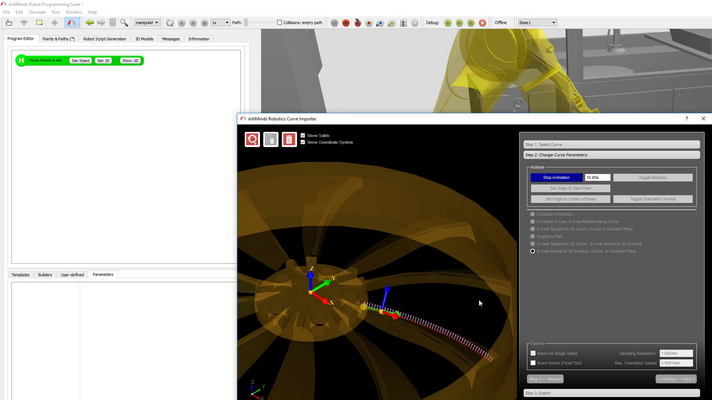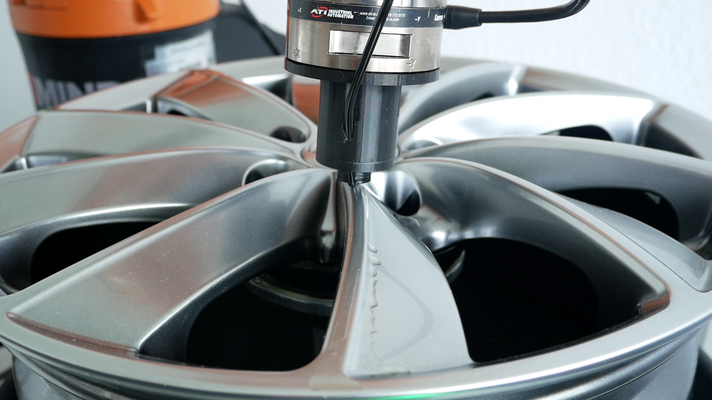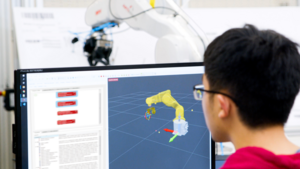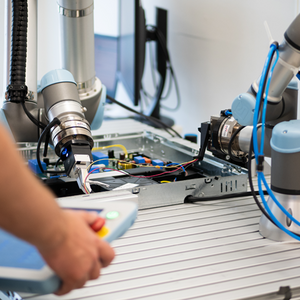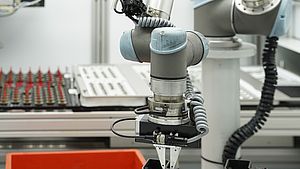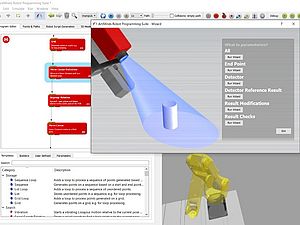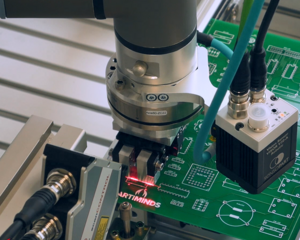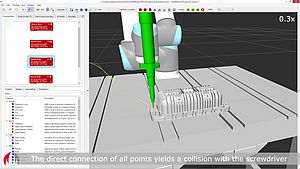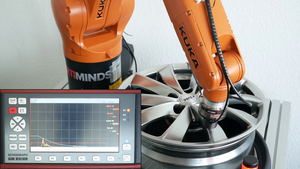Using ultrasonic, defects in components and inhomogeneities can be located. Robot-supported automation can reduce test costs as well as test time and make measurements reproducible. The software solution of ArtiMinds Robotics supports companies in programming a force controlled application with less effort and in automating path planning for complex components.
Ultrasonic testing is a widely used non-destructive test method to check cast parts for invisible defects such as blowholes, pores or cracks. Since the acoustic properties of the material change if those casting defects are present, the ultrasonic sound pulse is reflected and sent back to the test head.
For a successful test, a constant contact pressure of the test head is important
Especially if components have complex geometries, ultrasonic testing is often carried out manually. By automating the process with the help of robots, test costs and test time can be reduced and measurements made reproducible. A constant contact pressure of test head takes its importance for a successful test. This can be ensured by using a force/torque sensor. In this way, the robot can move force controlled along the trajectory of e.g. a wheel rim to detect non visible defects with the ultrasound test. All sensor data and test results are automatically and completely documented.
Software solutions such as ArtiMinds RPS minimize the programming effort occurring for complex component geometries. The robot movement or path is generated automatically based on the CAD object of the component, which can be imported with one click. This simplifies programming and eliminates the need for manual teaching of complex trajectories. In addition, special, predefined program tem-plates support the force controlled movement of the component, so that the alignment of the test head on curved surfaces is carried out automatically without the need to integrate a camera.



